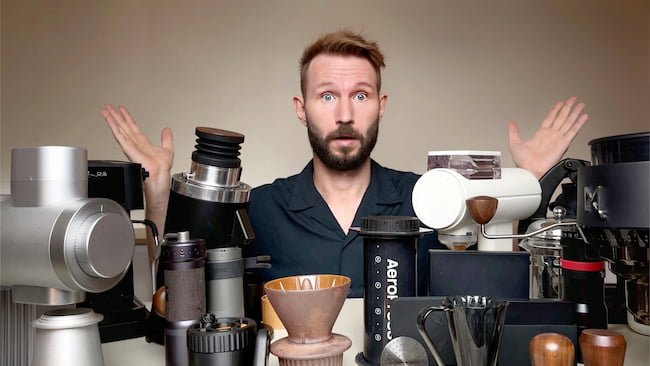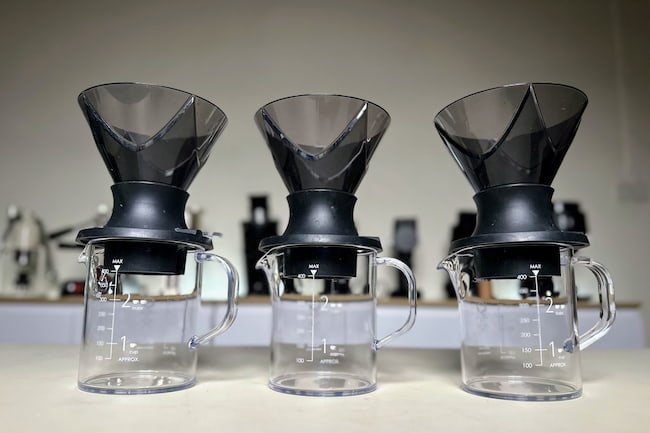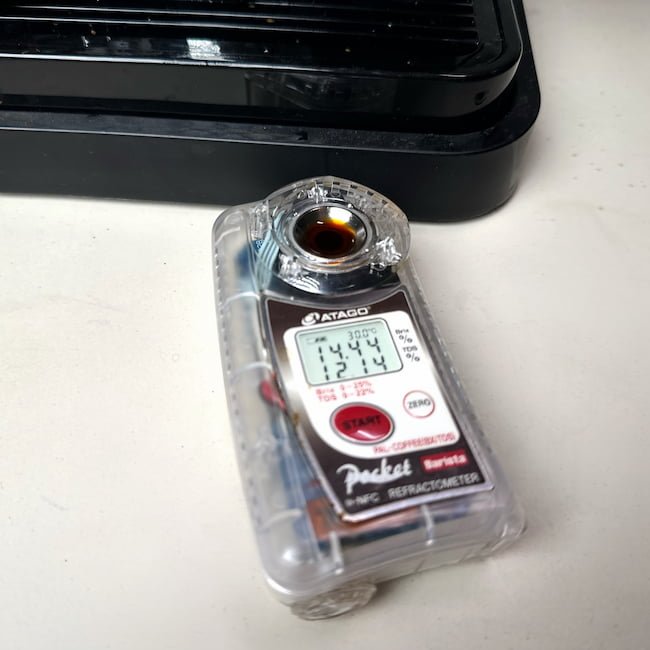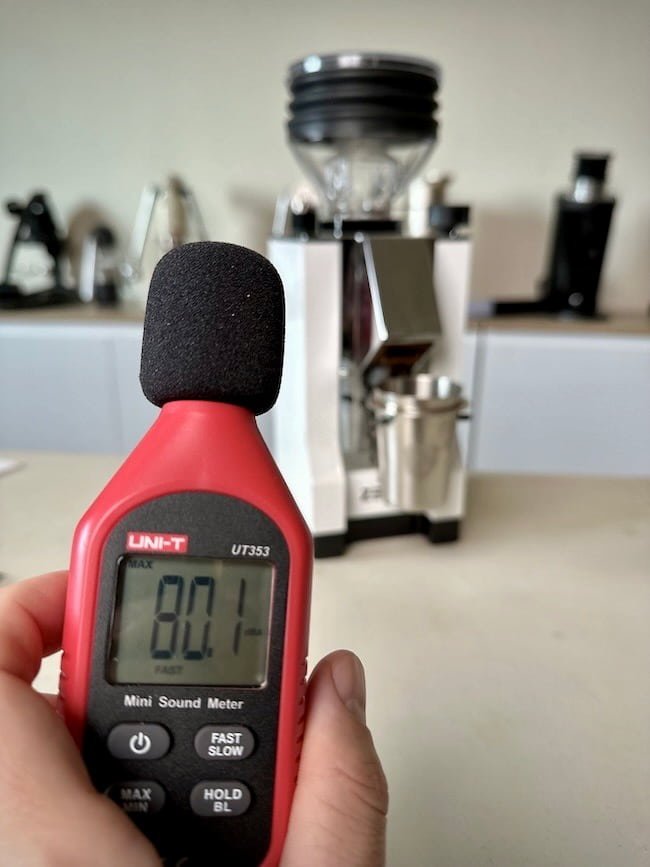Editorial & Product Review Policy

I love scrutinizing new products and finding great new gadgets for you guys, the readers.
I often get emails and DM’s thanking me for recommending a certain product, which always makes me happy.
On the other hand, I also have no issues with stating when a product has issues. If you’re a long time follower, you know I don’t mince my words.
A lot of time and effort goes into a product review, and it can sometimes be difficult to navigate the lines of being too picky and critical, yet giving useful advice for someone who’s not yet deep down the coffee gear rabbit hole. For many people, it’s absurd to spend $400 on a coffee grinder. For others, that’s considered entry-level or “budget”.
Here are some things I consider before sharing my opinion about a product.
My testing Approach
Extended Product Use: I don’t just take a quick look. Every product undergoes a thorough, long-term test to gauge its performance over time. This way, my reviews are based on sustained use, not just first impressions. If I share a first impression, I’ll make sure that you know it.
The more complicated and new the product is, the longer I strive to test it. Testing a simple pour-over cone is one thing; approaching coffee grinders with new electronic components, for example, is quite another.
(Quick note: When I say “I,” I really mean it. I personally pen 99% of the reviews on the site and on the YouTube channel, sipping and scrutinizing each product myself. On the rare occasion a guest writer steps in, I’ll make it crystal clear in the byline. And nope, no AI content here – just genuine, hands-on testing with plenty of coffee involved.)
Grinder testing
Testing grinders is one of the things I spent most time on. It’s tricky to do, but once you’ve established a good methodology, you can get a very good understanding of a given grinder.
Last year, I started using a setup of 3 Hario Switches for my side-by-side comparisons. The Switch works great for testing grinders.
Cupping is convenient for evaluating different beans, but when the focus is on grinders/burrs, it makes more sense to test in a way that mimics the brew method most people will use.
The Switch is very consistent, and you can use simple techniques like my Switch method with 3 drippers at the same time without too much difficulty. I recently switched the Switch in favor of Hario Mugen cones. This is because the thermal mass of the Mugen is even less, and over a long testing period, I have to waste less water to ensure a similar preheating.

The Mugens are also made of plastic, so they are a bit more convenient for moving around in a hectic test environment. (I also use Cafec’s Tritan servers for the same reason!). Another benefit of this setup is that I can meaningfully test percolation-style brewing with a tiny amount of coffee. You can do batches down to 8 g/135 ml that still brew like my normal Switch recipe. Over time, that difference becomes significant.
Why blind tasting?
I always back up my testing with blind tasting. As a human, I’m as susceptible to placebo as anybody else. It’s very easy to be biased in favor of more expensive/fancy stuff when picking out coffees.
Now, this is IMPORTANT: I also always use a refractometer to ensure that all coffees reach the same TDS and Extraction Yield. You can only match grind size so far with tools like Brewler/eyeballing. If EY and TDS don’t match, it’s very easy to draw the wrong conclusions. An objectively worse grinder can easily taste better if EY is not matched. I also test grinders at progressively higher extractions.
At lower extractions, it’s a lot more difficult to tell grinders apart, but as the extraction is pushed more and more, flavor notes and aftertaste will start to fall apart, and you’ll realize which grinder has a higher ceiling. I also run tests with different beans.
Certain grinders can shine with certain beans and roast levels, so in order to give them a fair chance, they need to be tested over a wide range of scenarios.

Besides that, I also just use a simple “daily use” routine where I use the grinder as my daily driver. Am I generally happy with the result here, or do I feel like I’m missing out? If yes or no — is my opinion backed up by blind tasting? When I say “X grinder has a cleaner aftertaste than Y grinder,” then these results come from extensive testing.
If you don’t use a refractometer, how can you be sure that you’re not just judging different extractions? You can’t. I don’t think refractometers are useful for regular coffee drinkers, but for grinder comparisons they are essential.
But let’s be frank: these differences are often not very big, and probably only perceptible to people with a lot of experience either the coffee industry or hobby. I try to communicate this distinction in my reviews.
Continuous Comparison: While some coffee creators give away their review units or sell them, I try to keep products around for ongoing comparisons. I’m not trying to amass the world’s biggest collection of coffee equipment. Rather, it’s to see how they stack up against future products in terms of features, durability, and overall value.
Trust me, when your coffee gear collection reaches the size of mine, it’s no longer a trivial matter. I have a room dedicated to storing coffee gear, causing a certain level of domestic tension.
However, I know that sensory memory is fickle, and it’s better to do a new comparison rather than rely on old memories. Ideally, you need to test again with different coffees to be entirely sure how certain grinders compare.
Negative Reviews: In my reviews, I strive to present both the positive and negative aspects of products. My approach is conscientious; I avoid unfairly criticizing or “punching down” on lesser-known brands. There are instances where I encounter products that fall below a 2-star rating out of 5. In such cases, I often share my honest opinions. However, I may choose not to publish a review if the product comes from a less prominent or startup brand. My reasoning is simple: I don’t wish to harm or mock someone’s passion project unduly.
The specialty coffee scene often features products from one-person operations or small teams. Many of these creators have invested their life savings into their products. Considering this, I am cautious about giving highly negative reviews to such products and might opt for sending the feedback directly to the producer instead, so they can hopefully improve in the future.

My Criteria
I evaluate coffee products from various angles:
- User Experience (UX): How user-friendly is it? Is it a joy or a chore to use every day?
- Market Position: I look at where the product stands in its market, considering its target audience and how it compares to its peers. Some grinders were the pinnacle when I started to review products back in 2015, but are now considered dated or “old technology.”
- Innovativeness: What makes this product stand out? Are there unique, innovative features?
- Material Quality: I scrutinize the build quality for both durability and aesthetic appeal.
- Longevity & Sturdiness: A key aspect is how well the product holds up with regular use.
- Coffee Flavors: I dive deep into the flavor profiles, acknowledging the subjective nature of taste and that my preferences (lighter roasts and fruity flavors) is not universally shared.
- General Consensus: Beyond my own views, I factor in community feedback and opinions from other creators and coffee professionals for a well-rounded perspective.
- Objective and Unbiased Reviewing: While personal tastes differ, I focus on evaluating each product fairly, based on its own merits.
Personal Opinion Disclosure: Transparency is key. Alongside my objective analysis, I’ll also share my personal viewpoints, clearly distinguishing them from my factual evaluations.
Bias: When you read online about coffee creators, it seems that many people think that the biggest risk for bias is when it comes to monetary gain. As someone who’s been reviewing coffee equipment for some time, I disagree. I don’t have a problem with saying bad things about products that could help me earn more. However, I find it’s a lot harder to say bad things about products where you have friendly/personal relations with brand owners and high-level executives. For that reason, I try to maintain a professional distance to people working in these positions.
Commitment to Honesty
I’m committed to honest, unbiased reviews. My mission is to guide you in making informed choices, not to push any brands or products.
I don’t do sponsored product reviews, but I occasionally create sponsored content (this is mainly on my YouTube channel, since most brands don’t care about written content these days).
I believe that it’s not wise to do a sponsored review – you can’t take money from a brand if you’re reviewing their products.
However, sometimes I will have a sponsored segment where I share a message from a sponsor that is tangentially related. In the past, I have had sponsored segments from a coffee magazine and a coffee roaster. Since these verticals are not my main focus when it comes to reviews, I’m open to collaboration.
I will use affiliate links when these are available, as it’s a non-intrusive way to monetize content and will disclose if this is the case.
FREE SAMPLES
I take pride in buying the majority of the products that I review.
There may be times, however, when I open the door to reviewing products that have been submitted for testing. This can be necessary given the very high prices on many coffee products.
I value maintaining the highest level of objectivity when assessing these product samples.
For that reason, I have created the following editorial policy.
Here it’s available to see for both readers and brands that are interested in sending a review unit.
Should you wish for me to consider reviewing your product, kindly submit a succinct pitch using the contact form on the website.
I kindly ask that before reaching, you take a moment to familiarize yourself with the stipulations of my editorial policy for product samples, outlined below:
- Providing a product sample does not assure editorial coverage by The Coffee Chronicler: When I determine a product may not resonate with my audience, I reserve the right not to feature it.
- I don’t offer you the option to see the review before publication.
- The format and nature of the review is at my discretion.
- The type of review content; be it a blog post, video, or social media post, is decided by me.
- The metrics and the process used for the review are determined solely by the reviewer.
- I will not engage in discussions about the review, either before or after its publication. However, a short evaluation with feedback from The Coffee Chronicler and suggested improvements can be provided upon request.
- Please note that product samples cannot be returned post-evaluation.